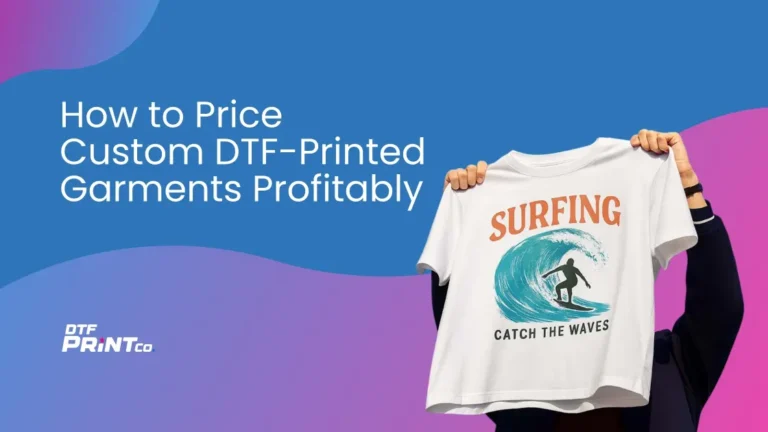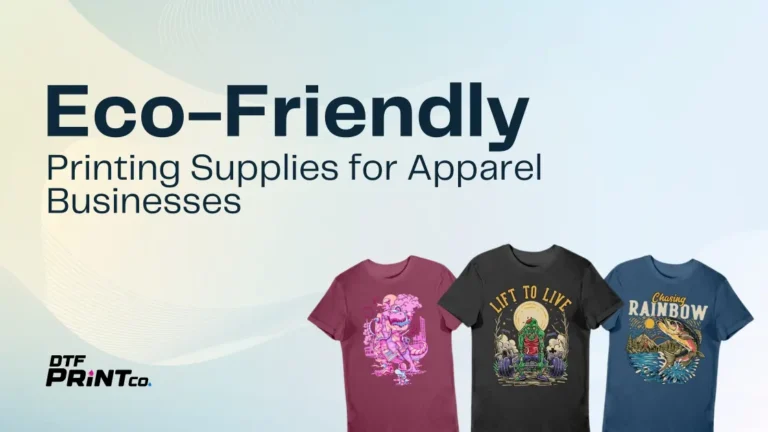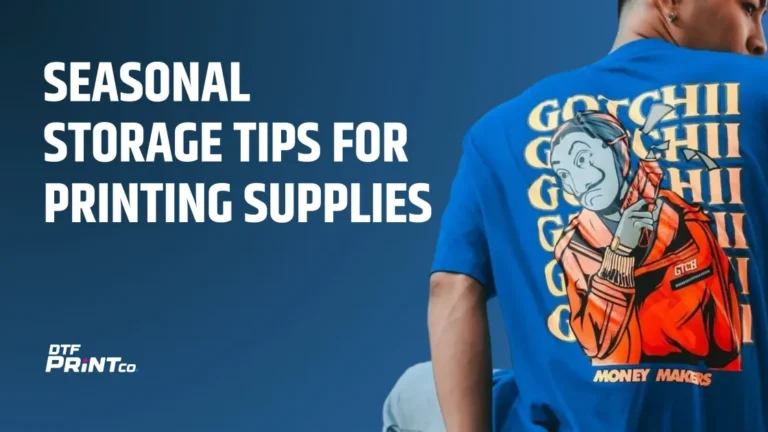Starting a print-on-demand hoodie business is one of the easiest and most profitable ways to launch an online clothing brand without holding inventory. Whether you’re a graphic designer, a creative entrepreneur, or someone seeking a low-risk side hustle, this model lets you sell custom hoodies worldwide with minimal upfront cost.
This comprehensive guide walks you through everything—from choosing a niche and print-on-demand supplier to setting up your e-commerce store and scaling profits. We’ll move step by step so you can launch with confidence.
Why a Print-on-Demand Hoodie Business Is a Smart Idea
Before diving into setup, it helps to understand why print-on-demand (POD) is perfect for hoodies:
- Low upfront costs – No need to buy bulk inventory. You only pay for each hoodie when a customer places an order.
- Flexible design testing – Quickly test new hoodie designs or seasonal collections without financial risk.
- Scalable fulfillment – POD suppliers handle printing, packing, and shipping, letting you focus on marketing and growth.
- Rising demand – Global hoodie sales keep climbing as streetwear and casual fashion trends continue to dominate.
According to Statista, the global custom t-shirt and hoodie market is expected to grow steadily through 2028. With low startup costs and year-round demand, a print-on-demand hoodie store can be a profitable long-term venture.
Step 1: Understand the Print-on-Demand Hoodie Model
The first step is grasping how the print-on-demand hoodie business model works. Think of it as a partnership between your online storefront and a POD supplier.
How the Print-on-Demand Process Works
- You create unique hoodie designs and upload them to your e-commerce store.
- A customer buys a hoodie.
- The POD supplier prints the design on a blank hoodie and ships it directly to the customer.
- You keep the difference between the retail price and the base cost.
This seamless process means no warehouses, no packing boxes, and no worrying about unsold inventory.
Key Components of the POD Hoodie Business
E-commerce Platform
Choose an online store builder that integrates with POD services. Popular options include Shopify, Etsy, and WooCommerce. Shopify, for instance, offers easy connections with major POD providers and strong tools for marketing and payment processing.
Print-on-Demand Supplier
This is your production partner. Top suppliers like Printful, Printify, and SPOD handle printing, quality control, and shipping. When comparing suppliers, focus on print quality, hoodie selection, shipping speed, and integration options.
Hoodie Blank Quality
The base hoodie fabric is the foundation of your product. Look for soft cotton blends, eco-friendly fabrics, and a variety of sizes and colors. High-quality hoodies lead to fewer returns and better customer reviews.
Design Files and Tools
Your design files must meet high-resolution standards (typically 300 dpi). Tools like Canva, Adobe Illustrator, or Figma help you create crisp, professional artwork.
Benefits and Challenges to Plan For
Like every business, a print-on-demand hoodie store has upsides and downsides:
Benefits
- No upfront inventory cost
- Ability to test new designs quickly
- Global reach with minimal effort
Challenges
- Lower profit margins compared to bulk manufacturing
- Reliance on third-party shipping times
- Need for strong branding to stand out in a crowded market
By understanding these trade-offs early, you can build systems—like faster shipping options or unique hoodie designs—that give you an edge.
Real-World Example
Consider Merch by Amazon or Redbubble sellers who’ve grown six-figure income streams simply by creating compelling hoodie art and leveraging POD. Their success shows what’s possible when you combine creativity with the POD model.
Helpful External Resources
- Learn more about global fashion e-commerce growth from Statista.
- Explore the basics of starting an online business with the U.S. Small Business Administration.
- Review print-on-demand industry trends on Shopify’s blog.
- Understand copyright and trademark essentials with the U.S. Copyright Office.
Step 2: Choose Your Niche and Target Audience
A clear niche and well-defined target audience give your print-on-demand hoodie business a strong foundation. Instead of selling to “everyone,” focus on a specific group of people with shared interests or styles. This focus helps you stand out, create memorable hoodie designs, and run more effective marketing campaigns.
Why Picking a Strong Niche Matters
- Clear branding – Your hoodie brand feels unified and easy to recognize.
- Lower competition – Fewer stores compete directly for the same audience.
- Higher engagement – Fans are more likely to share and recommend products that fit their lifestyle.
- Better pricing power – Unique niches support premium pricing because buyers see added value.
Popular Print-on-Demand Hoodie Niches
Here are proven hoodie niches to spark ideas:
- Streetwear culture – Bold graphics, urban fonts, and trend-driven styles.
- Fitness and active life – Gym-inspired designs, motivational quotes, or yoga graphics.
- Gaming and esports – Characters, gamer slang, or streaming community designs.
- Pet lovers – Breeds, funny animal sayings, or paw-print patterns.
- Eco-conscious fashion – Minimalist, nature-inspired graphics on sustainable hoodies.
- Pop culture or fandom – TV shows, music bands, or niche movie references (avoid copyright violations).
Focus on areas where you already have interest or knowledge. Your insider understanding of the culture will lead to better hoodie designs and authentic marketing.
Find Your Audience with Market Research
Knowing your target audience—their age, style, and shopping habits—helps you craft the right product and message. Try these tools and methods:
- Google Trends – See what hoodie-related keywords are rising in popularity.
- Etsy and Amazon search – Check which hoodie designs have strong reviews and consistent sales.
- Social media groups – Explore Facebook groups, Reddit communities, or TikTok trends to see what people discuss.
- Competitor analysis – Study successful stores in your potential niche to find gaps and opportunities.
For example, if you notice a spike in “retro anime hoodies” on Google Trends, that’s a strong signal of consumer interest.
Define a Clear Customer Profile
Create a simple customer persona that includes:
- Age range and location – e.g., college students in the U.S.
- Lifestyle and interests – e.g., skateboarding, street art, or eco-friendly living
- Shopping habits – e.g., prefers Instagram stores or Etsy
- Price comfort zone – e.g., $40–$65 per hoodie
This detailed persona guides your hoodie design, marketing voice, and ad placement.
Brand Positioning Tips
- Choose a memorable brand name that reflects your niche.
- Create a brand story that connects emotionally with buyers.
- Use a consistent color palette and logo across product images, packaging, and social media.
Example of a Strong Niche Strategy
Imagine creating a print-on-demand hoodie store that sells eco-friendly hoodies featuring minimalist mountain graphics. Your target customers are outdoor enthusiasts and eco-conscious millennials. Your marketing could highlight sustainable fabrics and donate a percentage of profits to environmental causes. This clear niche not only draws attention but also builds loyalty.
Step 3: Select the Right Print-on-Demand Supplier
Choosing the right print-on-demand supplier can make or break your hoodie business. This partner handles printing, packing, and shipping—so their reliability directly affects your customer experience and profit.
What to Look For in a POD Supplier
Print Quality High-quality printing methods like Direct-to-Garment (DTG) printing ensure vibrant, long-lasting graphics. Request samples from multiple suppliers and wash-test them to see which holds up best.
Hoodie Selection Check the variety of hoodie blanks: pullover, zip-up, heavyweight, and eco-friendly. More options help you reach different customers, from streetwear fans to eco-conscious shoppers.
Shipping Speed and Cost Fast and affordable shipping improves customer satisfaction. Compare delivery times for key markets such as the U.S., Europe, and Asia. Some suppliers have regional fulfillment centers for faster delivery.
Integration with E-commerce Platforms Make sure the supplier integrates smoothly with platforms like Shopify, Etsy, or WooCommerce. Automatic order syncing saves time and prevents mistakes.
Pricing and Profit Margins Look at the base cost per hoodie, plus printing and shipping fees. A good rule of thumb is to keep at least a 30% profit margin after costs.
Popular Print-on-Demand Suppliers for Hoodies
- Printful – Known for premium print quality and fast global shipping.
- Printify – Wide network of printing partners with competitive pricing.
- SPOD – Excellent shipping times, often within 48 hours.
- Gelato – Strong international reach and eco-friendly production.
Pro Tip: Order samples from two or three suppliers. Compare hoodie fabric quality, color accuracy, and packaging before choosing your main partner.
Sample Comparison Table
| Supplier |
Strengths |
Average Shipping Time |
Integrations |
| Printful |
High-quality DTG prints |
2–7 days |
Shopify, Etsy, WooCommerce |
| Printify |
Low base cost, wide product choice |
5–10 days |
Shopify, Etsy, eBay |
| SPOD |
Fast fulfillment, strong EU presence |
2–4 days |
Shopify, WooCommerce |
| Gelato |
Global reach, eco options |
4–7 days |
Shopify, Etsy, Wix |
This simple table helps compare at a glance and improves user experience.
Step 4: Design Your Hoodie Collection
Once you pick a print-on-demand supplier, focus on creating hoodie designs that connect with your audience. Your design quality directly influences whether shoppers click “buy.”
Essentials for Strong Hoodie Designs
- High-resolution files (300 dpi) for sharp, professional prints.
- Transparent PNG format for easy placement on any hoodie color.
- Accurate sizing using your supplier’s template to prevent misprints.
Design Tools like Canva, Adobe Illustrator, or Figma let you create eye-catching art even if you’re not a professional designer. Many POD suppliers also provide free mockup generators to show how the design will look on an actual hoodie.
Types of Hoodie Styles to Offer
- Classic pullover hoodie – A timeless everyday option.
- Zip-up hoodie – Ideal for layering and active lifestyles.
- Oversized hoodie – Popular in streetwear and casual fashion.
- Eco-friendly hoodie – Made from organic cotton or recycled fabrics.
Offering a mix of these hoodie types helps you serve diverse customer tastes and seasonal needs.
Copyright and Trademark Tips
Be careful with intellectual property. Avoid using protected logos, movie quotes, or character images without permission. For guidance, check resources like the U.S. Copyright Office and the U.S. Patent and Trademark Office.
Pricing Your Hoodies for Profit
After choosing your designs, calculate pricing with a simple formula:
Retail Price = (Base Cost + Shipping + Desired Profit Margin)
For example, if your base cost is \$18, shipping is \$5, and you want a 40% margin, the retail price would be about \$40.
Create a Cohesive Collection
A strong hoodie collection shares a visual theme—colors, fonts, or motifs—that reflects your brand story. This helps shoppers mix and match pieces and makes your online store feel professional.
Step 5: Build and Launch Your E-Commerce Store
With your print-on-demand supplier and hoodie designs ready, it’s time to create an online storefront that converts visitors into buyers.
Choose the Right E-Commerce Platform
- Shopify – User-friendly, powerful marketing tools, and smooth POD integrations.
- Etsy – Great for handmade or artistic hoodie designs and access to a built-in marketplace.
- WooCommerce – Flexible for WordPress users who want full customization.
Pick a platform based on your technical comfort, target audience, and desired store features.
Key Steps for Store Setup
- Domain Name & Branding – Choose a memorable store name and secure a matching domain.
- Product Pages – Use high-quality images and mockups to showcase each hoodie style.
- Compelling Descriptions – Write short, clear product copy that highlights fabric quality, fit, and care instructions.
- Payment & Taxes – Set up secure payments (e.g., PayPal, Stripe) and configure tax rules for your selling regions.
Tip: Add an “About Us” page to tell your brand story and build trust.
Launch Checklist
- Test checkout flow and payment gateways.
- Double-check shipping settings with your print-on-demand supplier.
- Offer an opening promo code to spark early sales.
Step 6: Price Your Hoodies and Calculate Profit Margins
Pricing directly affects your profits and market position. To keep at least a 30% profit margin, use this simple formula:
Retail Price = (Base Cost + Shipping + Target Profit) ÷ (1 – Desired Margin)
For example, if the base cost is \$18, shipping is \$5, and you want a 40% margin, you’d price around \$40–\$45.
Consider creating tiered pricing (e.g., premium organic hoodies at \$60) to appeal to different budgets.
Step 7: Market Your Print-on-Demand Hoodie Business
Marketing is where your brand grows. Combine free and paid tactics for maximum reach.
Organic Marketing
- Social Media – Share lifestyle photos on Instagram, TikTok, and Pinterest to showcase real-life hoodie styling.
- SEO Blogging – Write helpful posts like “Best hoodie outfits for winter” to attract search traffic.
- Email List – Offer a discount in exchange for email sign-ups to nurture repeat buyers.
Paid Marketing
- Facebook & Instagram Ads – Target specific customer personas built in Step 2.
- TikTok Ads – Great for trendy, youth-focused hoodie collections.
- Google Shopping – Ideal for reaching shoppers already searching for hoodies online.
Include authentic customer reviews and user-generated content to build trust and social proof.
Step 8: Handle Fulfillment and Customer Service
Excellent customer experience keeps shoppers coming back.
- Automated Order Processing – Your POD supplier should auto-sync orders for faster fulfillment.
- Clear Shipping Times – Display expected delivery windows on product pages.
- Responsive Support – Quickly answer questions about sizing, returns, and refunds.
Strong customer service leads to repeat sales and positive word-of-mouth marketing.
Step 9: Scale Your Hoodie Business
Once your store runs smoothly, consider these scaling strategies:
- Expand Product Lines – Add matching joggers, beanies, or seasonal hoodie designs.
- Go International – Use suppliers with global fulfillment centers to reach new markets.
- Collaborations – Partner with influencers or micro-brands to release limited-edition hoodies.
- Subscription Boxes – Offer monthly themed hoodies for loyal fans.
Track key metrics like conversion rate, average order value, and customer lifetime value to guide growth decisions.
Common Pitfalls to Avoid
- Ignoring shipping times – Delays can lead to negative reviews.
- Underpricing – Low prices hurt profits and brand perception.
- Weak branding – Generic designs make it hard to build a loyal following.
Plan ahead to dodge these issues and maintain a professional reputation.
FAQs about Starting a Print-on-Demand Hoodie Business
What is the average startup cost?
Most entrepreneurs spend between \$0 and \$200 on initial setup (domain, design software, and samples).
Can I sell worldwide?
Yes, if your print-on-demand supplier offers international shipping. Check fulfillment times for each region.
Which POD platform offers the best margins?
It depends on your niche and volume. Printify often provides lower base costs, while Printful offers premium quality at a higher price.
How long until I make my first sale?
Many stores see first orders within a few weeks if marketing is consistent.
Conclusion
Starting a print-on-demand hoodie business is a practical, low-risk way to launch your own fashion brand. By choosing a focused niche, selecting a reliable POD supplier, designing standout hoodie collections, and marketing effectively, you can build a profitable online store that scales worldwide.
Take action now:
- Pick your niche.
- Order samples from at least two print-on-demand suppliers.
- Launch your e-commerce store and start promoting.
With careful planning and consistent marketing, your print-on-demand hoodie business can grow from a side hustle into a sustainable brand.






